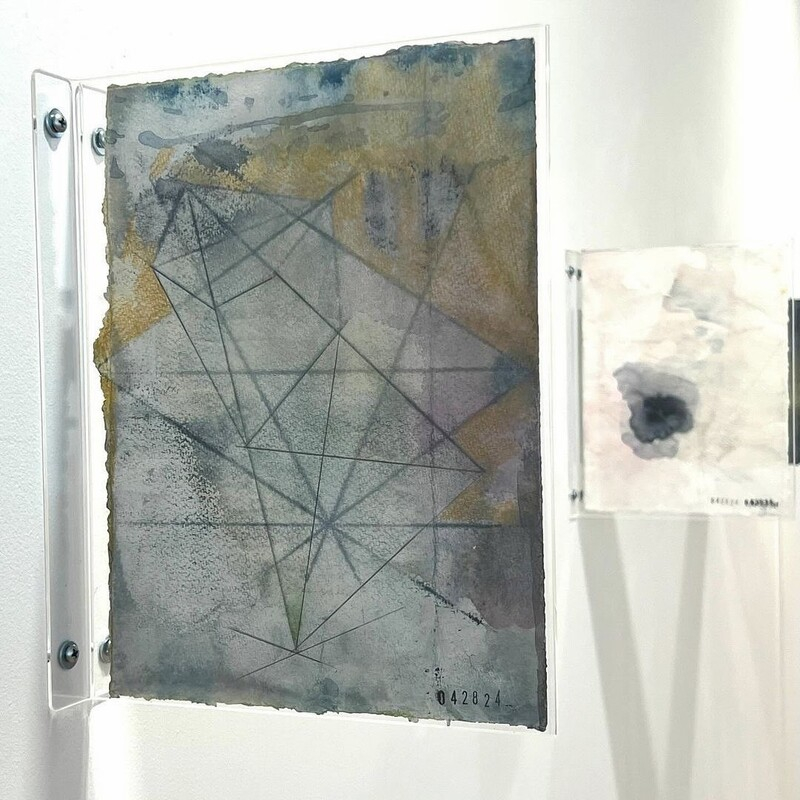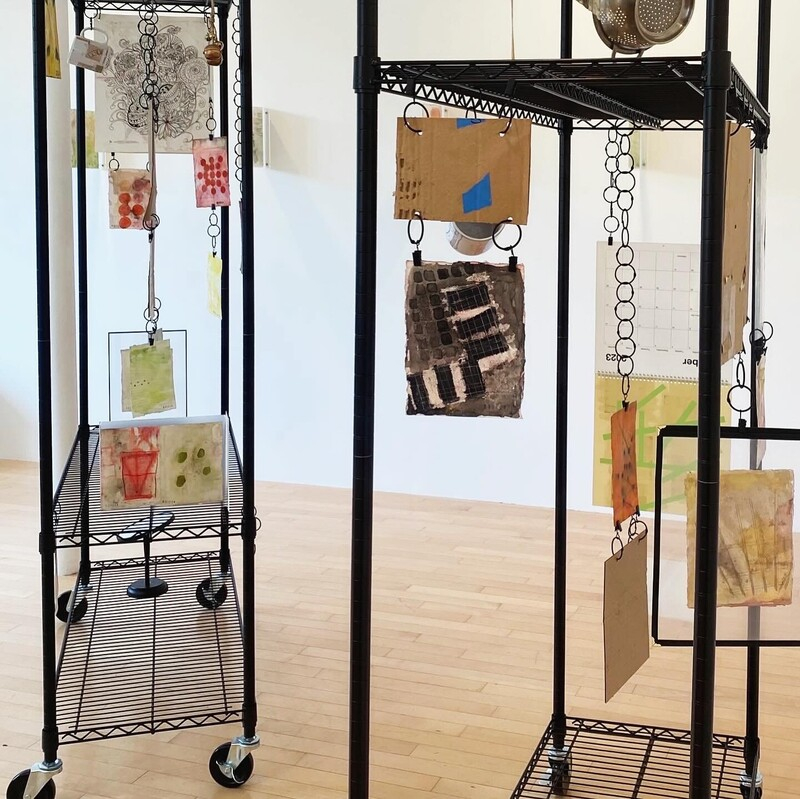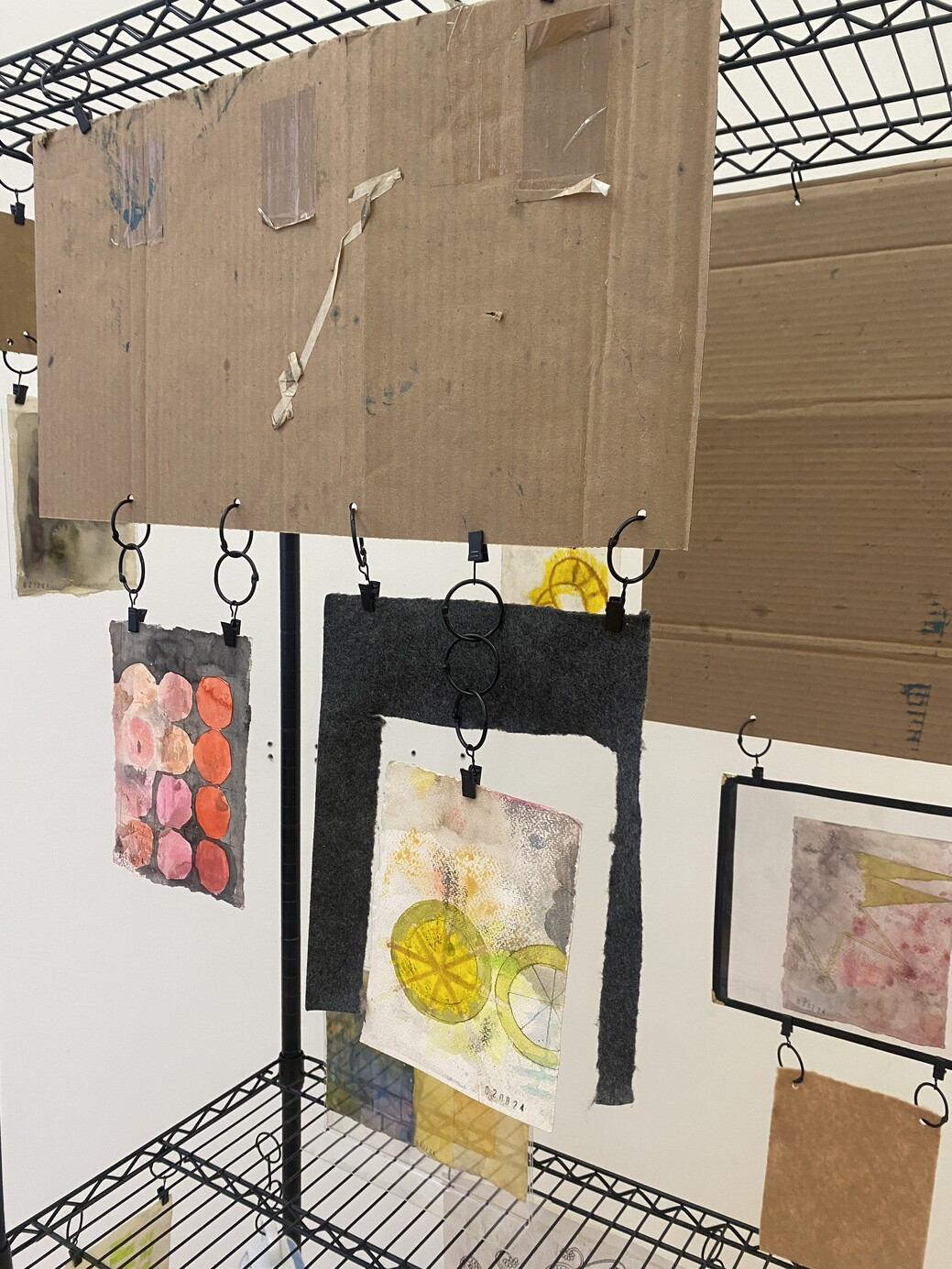
Sharon Butler: Buildingdrawing
Furnace Art on Paper Archive
Falls Village, CT 06031
June 1 - July 6th
Familiar art movements: Abstract Expressionism, Surrealism, and American Realism are all back in the New York Art World, but in tidier packages. Maybe I'm going to the wrong galleries, but I rarely see any experimentation in how a show is hung anymore. So it's great to see Sharon Butler's show at Furnace Art on Paper in Falls Village, a quiet spot in an increasingly lively part of Connecticut.
The gallery's owner, Kathleen Kucka, is an exciting artist and open to new approaches.
Butler uses the familiar shapes of Early Modernism—rectilinear, triangle, spots—as her subject. But she has always questioned every part of formal abstraction. How the work is mounted, the stretcher bars, the canvas, the frame—every aspect is reformable.
In this show, the given that is being challenged is the presentation. How do you hang a show?
Small, unframed watercolors hang on clamps and chains from three black metal-wheeled clothes hangers similar to those in museum coat check rooms for holding bags and coats. Familiar objects hang next to them: a potato masher with a squiggly metal press and black plastic handle, a used hand truck has a delicate piece hanging by large circular chains from its handle, and objects from the kitchen and the studio: a mug, a stapler, a colander.

The artist's making double-sided pieces originally motivated the unmooring of the work from the wall. These have been contained in Perspex sleeves that allow you to see studies on both sides of the paper. They jut out perpendicularly, like hospital signs meant to designate room ordinances.
From there, she began to imagine multiple ways of seeing the work from different viewing points, eventually hanging them and placing them on moving carts.
It's as if El Lissitzky's sketchbook is scattering shapes. They fall like blossoms in new ways and new colors. In connection with a surface, they disrupt or dissolve. Or blend with something that was there before.
As I walked away from the gallery the first time, I imagined I could see the pieces suspended in a frozen vortex without the walls, the objects, or the trolleys. It reminded me of a camera technique from the late '90s that became a staple of martial arts movies: the players would leap into the air and stay there while the camera was free to move around them. I felt like Neo waking in the Matrix.
Perhaps I was light headed because the way art is exhibited in a gallery is usually so fixed. This arrangement is so unfamiliar.
The pieces are small rectangles with perhaps a patch of color—spots of color that have been used to monoprint another piece—or a single-stroke pencil-drawn triangle. They have a Paul Klee feel, although even lighter and less definite. They're beautiful in a way that makes choosing one over another very difficult.
Just as they are Casualist, they are equally Causalist.
Each action precipitates another effect. The values change when there is water on the surface of the paper. All of a sudden, geometrics are not stable. Pencil lines can create space or limit it. A brush with open separated tines traces a swathe of green across the paper.
But the old art adage of doing something, doing something to it, and so on has led to dissipation. Are they falling apart or is their evanescence due to their reaching for transcendence through revelation?

Either way, their fugaciousness is contrasted with the lumpen solidity of the objects and the trolleys.
There is Surrealist poetry to the use of everyday objects. The watercolors act like the formal aspects of poetry—syntax, meter, and scan. The objects are verbs/nouns, things that do things. The dots in the colanders, the hole punch, and the curving handle of a staple gun are part of the associations. However, they are doubly redundant; they have not helped to make the artworks, and they can no longer do their jobs.
Sharon Butler's work is familiar, and perhaps a return to art styles that once worked is happening because a moment of reconsideration is needed.
It could work, but only if the questions and the motivation for asking them are as new as they are.
